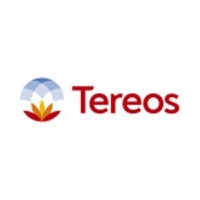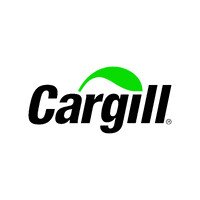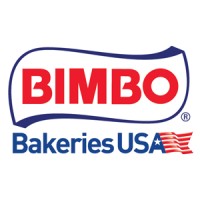
Bell Food Group AG Company Cyber Security Posture
bellfoodgroup.comThe Bell Food Group is one of the leading processors of meat and convenience food in Europe. The product range includes fresh meat, poultry, charcuterie, seafood as well as ultra-fresh, fresh and non-perishable convenience and vegetarian products. With the brands Bell, Hilcona, Hügli and Eisberg, the Group meets a diversity of customer needs. Its customers include the retail trade as well as the food service sector and the food processing industry. The Bell Food Group is a market leader in Switzerland and in individual product segments in several European countries. Some 13 000 employees in 14 countries generate annual sales of more than CHF 4.5 billion. Steeped in tradition, the company was established in 1869 when Samuel Bell opened his first butcherʼs shop in Basel. The Bell Food Group is listed on the Swiss stock exchange.
BFGA Company Details
bell-food-group-ag
10,001+ employees
13231
311
Food and Beverage Manufacturing
bellfoodgroup.com
Scan still pending
BEL_1093779
In-progress
Between 900 and 1000
This score is AI-generated and less favored by cyber insurers, who prefer the TPRM score.
 BFGA Global Score
BFGA Global Score.png)

Bell Food Group AG Company Scoring based on AI Models
| Model Name | Date | Description | Current Score Difference | Score |
|---|---|---|---|---|
| AVERAGE-Industry | 03-12-2025 | This score represents the average cybersecurity rating of companies already scanned within the same industry. It provides a benchmark to compare an individual company's security posture against its industry peers. | N/A | Between 900 and 1000 |
Bell Food Group AG Company Cyber Security News & History
| Entity | Type | Severity | Impact | Seen | Url ID | Details | View |
|---|
Bell Food Group AG Company Subsidiaries

The Bell Food Group is one of the leading processors of meat and convenience food in Europe. The product range includes fresh meat, poultry, charcuterie, seafood as well as ultra-fresh, fresh and non-perishable convenience and vegetarian products. With the brands Bell, Hilcona, Hügli and Eisberg, the Group meets a diversity of customer needs. Its customers include the retail trade as well as the food service sector and the food processing industry. The Bell Food Group is a market leader in Switzerland and in individual product segments in several European countries. Some 13 000 employees in 14 countries generate annual sales of more than CHF 4.5 billion. Steeped in tradition, the company was established in 1869 when Samuel Bell opened his first butcherʼs shop in Basel. The Bell Food Group is listed on the Swiss stock exchange.
Access Data Using Our API

Get company history
.png)
BFGA Cyber Security News
Bell Food’s Eisberg unit sells three plants
Switzerland-headquartered Bell Food, which supplies meat and convenience food products to the retail and foodservice channels, is offloading the ...
Bell Food Group to appoint new CEO
Swiss meats and convenience foods producer Bell Food Group is to promote executive Marco Tschanz to CEO.
JBS beef plant back in operation after weekend fire
The JBS beef plant in Grand Island, Nebraska, is back in operation after a fire broke out at the facility on September 12.
Bell acquires tech services companies Stratejm and CloudKettle Inc., strengthening managed cybersecurity and Salesforce capabilities for enterprises
"The FX Innovation team is excited to welcome Stratejm and CloudKettle Inc. to the Bell group of companies. Having joined Bell ourselves just a ...
Bell Food Group to split off international poultry unit
Incoming Bell Food Group CEO Marco Tschanz, due to take over in June, will head up the newly independent Hubers/Sütag business unit.

BFGA Similar Companies

McCain Foods
At McCain, we believe food plays an important role in people’s lives, with the power to bring individuals, families, and communities together. As a privately owned family company with over 67 years of experience, a presence in over 160 countries, and a global team of 23,000+ people, our values an

Nutreco
Nutreco is a global leader in animal nutrition and aquafeed. Our advanced nutritional solutions are at the origin of food for millions of consumers worldwide. Quality, innovation and sustainability are guiding principles, embedded in the Nutreco culture from research and raw material procurement

Tereos
The Tereos cooperative group, a union of 10,700 cooperative members, has recognized know-how in the processing of beet, sugar cane, alfalfa and cereals. Through 41 industrial sites, a presence in 15 countries and the commitment of its 15,800 employees, Tereos supports its customers close to their ma

Cargill
Cargill is a family company committed to nourishing the world in a safe, responsible and sustainable way. With over 158 years of experience, we sit at the heart of the supply chain, partnering with producers and customers to source, make and deliver products that are vital for living. Whether it’s m

Arla Foods
We are more than 21,000 colleagues across 30 countries and 7,999 dairy farmer-owners in Denmark, Sweden, United Kingdom, Germany, Belgium, Luxembourg, and the Netherlands. We aim to create the future of dairy, to bring healthy and sustainable dairy products to people across the world, and to lead th

Bimbo Bakeries USA
Have you ever started your morning with a Thomas’® English muffin or bagel? Or bitten into the perfect slice of Sara Lee® bread? Do you break open a fresh box of Entenmann’s® donuts at family gatherings? If so, you’re already a fan of Bimbo Bakeries USA – the powerhouse behind these iconic brands!

Frequently Asked Questions
Explore insights on cybersecurity incidents, risk posture, and Rankiteo's assessments.
BFGA CyberSecurity History Information
How many cyber incidents has BFGA faced?
Total Incidents: According to Rankiteo, BFGA has faced 0 incidents in the past.
What types of cybersecurity incidents have occurred at BFGA?
Incident Types: The types of cybersecurity incidents that have occurred include .
Incident Details
What are the most common types of attacks the company has faced?
Additional Questions
What Do We Measure?
















Every week, Rankiteo analyzes billions of signals to give organizations a sharper, faster view of emerging risks. With deeper, more actionable intelligence at their fingertips, security teams can outpace threat actors, respond instantly to Zero-Day attacks, and dramatically shrink their risk exposure window.
These are some of the factors we use to calculate the overall score:
Identify exposed access points, detect misconfigured SSL certificates, and uncover vulnerabilities across the network infrastructure.
Gain visibility into the software components used within an organization to detect vulnerabilities, manage risk, and ensure supply chain security.
Monitor and manage all IT assets and their configurations to ensure accurate, real-time visibility across the company's technology environment.
Leverage real-time insights on active threats, malware campaigns, and emerging vulnerabilities to proactively defend against evolving cyberattacks.




